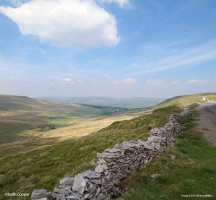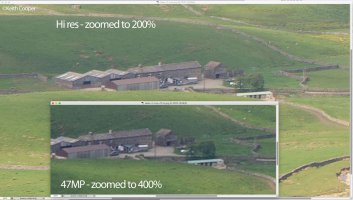I've just finished a lengthy review of the Panasonic S1R, especially looking at using it with Canon lenses.

 www.northlight-images.co.uk
www.northlight-images.co.uk
My TS-E17 and 24 work really well particularly in the 187MP multi-shot mode
I've attached a 250MP shot (shift/stitched) at a quarter full res. and detail showing what more the 187MP mode gets over 47MP (and my 5Ds)
I really liked the S1R, and it's given me some more clarity on what I'd like to see in any mirrorless replacement for my 5Ds:



Panasonic Lumix S1R review. Using the 47MP full frame mirrorless camera
Panasonic Lumix S1R review. Using the 47MP full frame mirrorless camera with special emphasis on the 187MP multi-shot high resolution mode
My TS-E17 and 24 work really well particularly in the 187MP multi-shot mode
I've attached a 250MP shot (shift/stitched) at a quarter full res. and detail showing what more the 187MP mode gets over 47MP (and my 5Ds)
I really liked the S1R, and it's given me some more clarity on what I'd like to see in any mirrorless replacement for my 5Ds:
- The S1R sensor stabilisation is just great with all the Canon lenses I tried
- The S1R 187MP multishot mode works a treat with my TS-E lenses, but it needs to be able to fire a flash for individual images.
- I’d like to see an EVF as good as the 5.7Mdot one in the S1R
- On the fly image magnification for manual focus and more adjustable focus peaking
- I don’t want to see the sensor open to the world when I swap lenses (The S1R collects dust like my old 1Ds)
- I want a lot more customisation options than I get on the EOS RP (much as I like it)
- The S1R does video – I never tried it, just make sure that I can always remap the video record button to something useful


